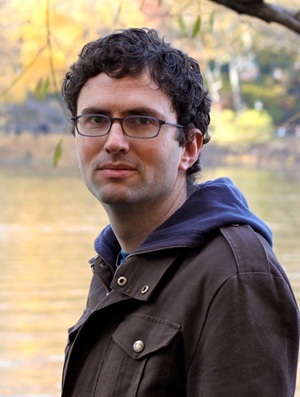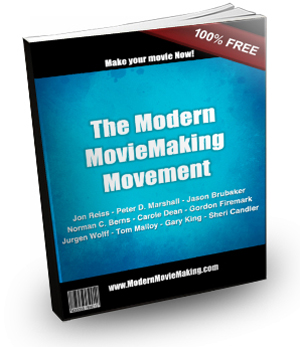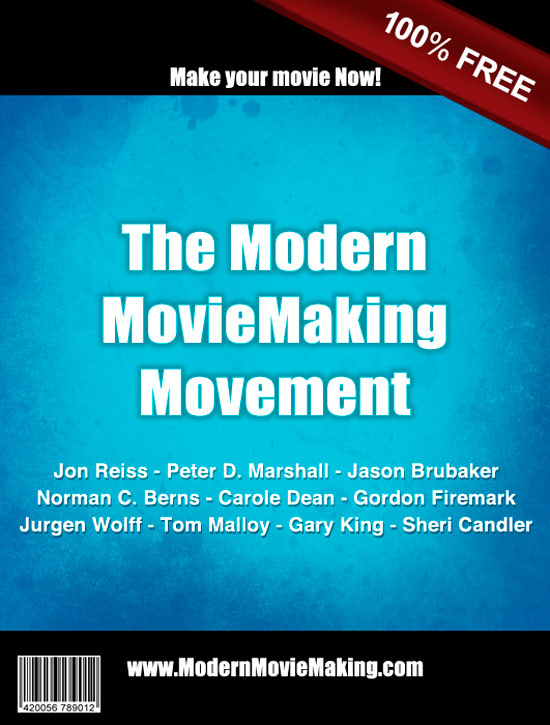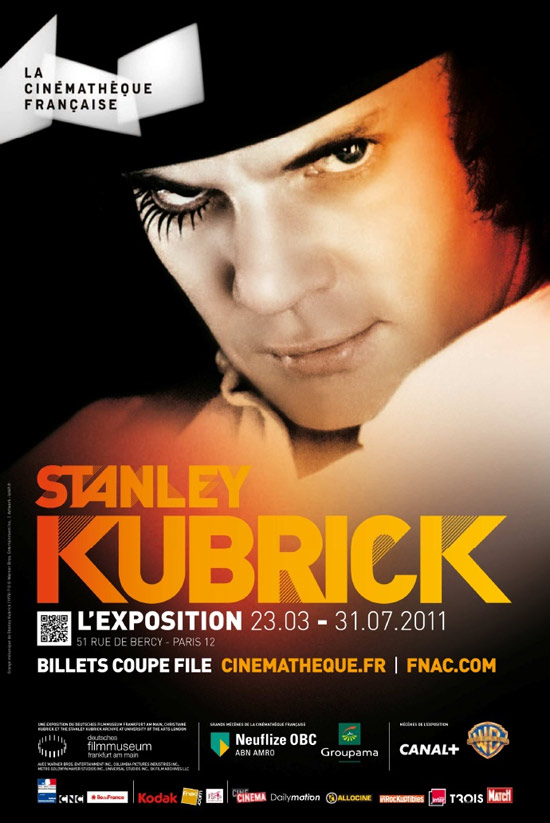There are few fighters for Indie Film as ferocious as Orly Ravid. In addition to co-founding the only non-profit film distributor, The Film Collaborative, she speaks up and out about the state of things. Today she looks at a recent panel on “15 Years Of Film Distribution” and addresses a lot of what went unsaid.
On July 16, 2011 at the Elinor Bunin Munroe Film Center on indieWIRE Editor in Chief Dana Harris moderated a discussion about the past 15 years of film distribution with (left to right): Richard Abramowitz, Amy Heller, Bingham Ray, Bob Berney, Ira Deutchman, Mark Urman, Arianna Bocco and Jeanne Berney. It can be found here. The Sundance distribution announcement was made last week.
So glad to know, as Mark Urman noted, that even big A-list cast films have a hard time getting listed properly on Cable VOD in terms of cast. We know that Sundance indie Adventures of Power also was not always listed properly in terms of noting its full cast (namely Jane Lynch & Adrien Grenier who both have massive fan bases were sometimes left off the film’s VOD description). What will it take the MSOs to get it together? Please let’s not all name or rename our films with numbers or start with the letters A,B,C,D, or E. If Comcast can insert ads into programming surely they and all the other dozens of MSOs (Multi System Operators) can find a way to help attract an audience for films on their system by categorizing them and filling in complete descriptions even on mammoth platforms.
The glut of content was discussed and the marketing challenges all distributors of cinema face. We all know it’s cheaper to make films now, there are more of them, they don’t die or go away, they just multiply annually and even some of the panelists spoke to younger generations not even committed to being filmmakers, but just making films because they can and it’s made to seem so cool. Indeed. And what I want someone to say, well ok I will just say it, is when the real numbers behind film distribution are revealed across the board perhaps we’ll see a trim in supply. The best, most creative and most committed will survive and thrive. Investors will be choosier because they’ll have all of the REAL information they need to make educated decisions. As for how to clear through the clutter, well, that goes back to the basics of know-your-audience, down to the “T” and don’t pretend it’s everyone. I look forward to even more lifestyle and interest oriented programming and content servicing and all the more reason for filmmakers to cultivate audiences directly, where there is no room for glut or confusion.
They joked about no one knowing VOD numbers, except for Arianna of IFC of course and Mark sometimes when his VOD client (Tribeca Films I presume) fills him in. Well, we have some from our forthcoming case study book Selling Your Film Without Selling Your Soul and I want to challenge ALL FILMMAKERS to share your numbers and stop the madness of mystery! And I agree, it’s time that these numbers start getting tracked and reported in a more automated fashion as theatrical box office and DVD sales are now. Still those number only show gross, and not the spend needed to achieve those numbers.
Melanie of Milestone noted younger people have different habits in terms of what they want to view and how they view. So maybe we need younger folks running distribution companies now. TFC is hiring.
Arianna of IFC notes that piracy is a huge issue and that young people do not want to pay for content. So we can either be disturbed by that, or we can work with that knowledge and release in a way that will maximize revenues, instead of forcing audience into outdated window methods. One film we recently observed tried to monetize its distribution via sponsorship, but waited way too long to get started, tried to do so without a distribution plan in place, is having its theatrical launch 6 months after its festival premiere and cannot seem to make a decision on the rest of its distribution whilst it awaits fat-enough-offers that are not coming. That sort of paradigm is a set up for failure and leaves the film open to piracy when a clear plan from the start and an immediate release after festival premiere could have led to quicker monetization (sponsored, DIY and/or via a donation campaign on VODO). We caution against proceeding with filmmaking when there is no viable plan in place.
A question via TWITTER that came in was: Where do you want to be 15 years from now? Richard Abramowitz is amazed he’s still in the biz now… and that’s honest in that it speaks to deep concerns about the changes in the business and the truth is, the more transparent service providers are about their numbers, the more likely they will survive. Those less transparent are not likely to sustain themselves. What I object to is the mythology in this industry and the mask of success that hides the real story of spending more than you made back because there are too many expensive services or middlemen. Who can tell me about their PROFIT? Not just for themselves, but for the filmmakers and investors they represent? Who will publicly admit the numbers on how much was spent for each service even on services they did not really need if they were better educated, and each middleman and what that yielded? When people do not, it’s largely because they want to get the next project funded and, to me, this is no better than a pyramid scheme. You know what eventually happens with those, right? See 2008 for an indication. Anyone who wants to challenge TFC on its transparency please do, I am ready.
‘Theatre going experience is in our DNA (like gazing at a fire)’, says Bingham Ray. The communal experience is what it’s all about. Amen. I say let’s bring back the drive-in. I especially want it for Sundance film Co-dependent Lesbian Space Alien Seeks Same.
Ira speaks to the Opera audience. He noted, as audiences get older they crave that experience (communal screening) more. I love that Ira Deutchman grew a business out of this niche. Niche is golden. A lesson for us all.
Ira spoke to “eventizing” theatrical– several noted about adding Q&As, live music, director attendance, panel discussions– to enhance theatrical and all of those screenings do well. Indeed. We have observed the same and that speaks even more to filmmakers knowing their audience and being more engaged in their own releases. There is nothing of this that one cannot do.
Ira ends quoting Richard Lorber “everything is possible and nothing works” harking back to 25 years ago when distribs celebrated small victories and spent little – before the rise and fall of indie bubble and the studios dressing big releases in indie clothes. My comment is regarding the “professional” the middle man, the lack of transparency even still is a burden, the fees paid excessive if one analyzes from the point of view of sustainability and healthy business. Service deals are announced like acquisitions. That’s why they say “film business” is an oxymoron but it need not be. And that’s why TFC’s resolve now is to not work with unsustainable filmmakers. We do not want to feed the habit, enable unrealistic expectations. If you spent too much on making your film, if your expectations are unreasonable, if you are not committed to being educated about both film and engaging audiences, and most of all, if you are just a money bag and not a creator but rather buying into the dream that your film (which you did not even create) is going to make you rich or richer, please go home.
And now, on a less cranky and more joyous note: What I love about the Sundance distribution initiative:
11. It’s offering filmmakers a truly filmmaker friendly set up by having a good partner and fair contract terms.
12. The terms offered by a truly excellent partner like New Video were already good in general, but are now even slightly advantaged.
13. That the deal is non-exclusive and allows filmmakers proper agency and control.
14. That I partly inspired it starting in 2009 and that the folks at Sundance listened, discussed, and worked it out slowly but surely and that there is more to come.
15. The Sundance brand connected with its alumni of filmmaker’s brands and on key platforms that function as the key portals to film lovers (and yet not at the exclusion of other viable modes of DIY and traditional distribution) is the model I have always championed even before TFC launched, because it makes sense. It’s good for filmmakers; it’s good for audiences and back to # 1 and #2, initiatives like this are the way to help clear a path through the content of clutter to the curious eyes of cinema loving consumers.
This post originally ran on The FIlm Collaborative.
Orly Ravid has worked in film acquisitions / sales / direct distribution and festival programming for the last twelve years since moving to Los Angeles from home town Manhattan. In January 2010, Orly founded The Film Collaborative (TFC), the first non-profit devoted to film distribution of independent cinema. Orly runs TFC w/ her business partner, co-exec director Jeffrey Winter.


 Wanda Bershen is a consultant on Fundraising, Marketing and Distribution for Documentary projects and arts organizations. Her company, RED DIAPER PRODUCTIONS, has organized film programs, festivals and travelling series with The Brooklyn Museum, MOMA, BAM Rose cinemas, and Walter Reade theater. She has written for American Quarterly, Film Quarterly and Documentary magazine and currently teaches a graduate seminar at CUNY/Baruch.
Wanda Bershen is a consultant on Fundraising, Marketing and Distribution for Documentary projects and arts organizations. Her company, RED DIAPER PRODUCTIONS, has organized film programs, festivals and travelling series with The Brooklyn Museum, MOMA, BAM Rose cinemas, and Walter Reade theater. She has written for American Quarterly, Film Quarterly and Documentary magazine and currently teaches a graduate seminar at CUNY/Baruch.  TRUE ADOLESCENTS marks Craig Johnson’s feature film writing and directing debut. He is currently writing a project for 20th Century Fox and preparing his second feature as director, THE SKELETON TWINS, which he co-wrote with Mark Heyman (BLACK SWAN). He holds an MFA from New York University’s graduate film program, where he was awarded a Clive Davis Award for Excellence in Music in Film.
TRUE ADOLESCENTS marks Craig Johnson’s feature film writing and directing debut. He is currently writing a project for 20th Century Fox and preparing his second feature as director, THE SKELETON TWINS, which he co-wrote with Mark Heyman (BLACK SWAN). He holds an MFA from New York University’s graduate film program, where he was awarded a Clive Davis Award for Excellence in Music in Film. David Geertz has worked in the film business since 1992 and is a partner in Binoir Media, a diversified holding company that has a focus in the content sector and is heavily engaged in building social utilities for the producers to assist them in funding, marketing, distribution and audience participation of independent media based projects. David’s work currently focuses on finding the new sweet spot for ensuring a balanced approach to funding and profiting in the content sector through his newest technology company
David Geertz has worked in the film business since 1992 and is a partner in Binoir Media, a diversified holding company that has a focus in the content sector and is heavily engaged in building social utilities for the producers to assist them in funding, marketing, distribution and audience participation of independent media based projects. David’s work currently focuses on finding the new sweet spot for ensuring a balanced approach to funding and profiting in the content sector through his newest technology company 



